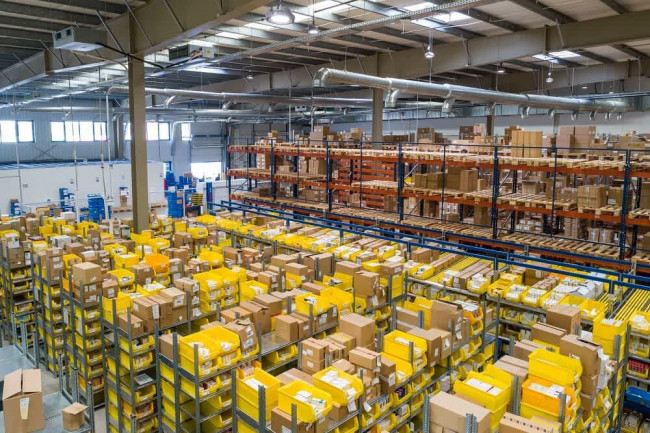
E-commerce has transformed the retail industry, allowing customers to shop for goods and services online from anywhere in the world. With the growth of online shopping, the role of warehousing and distribution in e-commerce fulfillment has become more important than ever before. In this article, we will explore the key functions of warehousing and distribution in e-commerce fulfillment and the challenges that businesses face in meeting the demands of online shoppers.
Functions of Warehousing and Distribution in E-commerce Fulfillment
1. Inventory Management
Inventory management is a critical function of warehousing and distribution in e-commerce fulfillment. Warehouses receive and store inventory from suppliers, and the inventory is then tracked and managed until it is shipped to customers. E-commerce businesses need to maintain accurate inventory records to ensure that they have the products their customers want in stock and can quickly fulfill orders. This is particularly important during peak sales periods, such as Black Friday and Cyber Monday, when demand for certain products can be extremely high.
2. Order Fulfillment
Order fulfillment is another essential function of warehousing and distribution in e-commerce. When a customer places an order online, the warehouse staff must pick, pack, and ship the order in a timely and accurate manner. The efficiency of the order fulfillment process is critical to customer satisfaction and retention. Delays or errors in order fulfillment can result in negative reviews and lost customers.
3. Shipping and Delivery
Shipping and delivery are key components of e-commerce fulfillment. The warehouse staff must ensure that the products are properly packaged and labeled for shipping, and that they are shipped using the most cost-effective and efficient method possible. E-commerce businesses also need to provide timely and accurate delivery information to their customers to ensure that they receive their orders on time. This includes providing tracking information so that customers can monitor the status of their orders.
Challenges in Meeting E-commerce Fulfillment Demands
1. Faster Delivery Expectations
Online shoppers have high expectations for delivery times and expect their orders to be delivered quickly. This puts pressure on e-commerce businesses to ensure that their warehouse and distribution operations are efficient and can meet these expectations. Businesses that cannot meet fast delivery times risk losing customers to competitors who can. To meet these demands, many e-commerce businesses are investing in same-day or next-day delivery services. This requires a significant investment in warehousing and distribution infrastructure, as well as transportation and logistics.
2. Inventory Management Complexity
Managing inventory in an e-commerce fulfillment operation can be complex. E-commerce businesses need to manage inventory across multiple channels and ensure that they have the right products in stock to meet customer demand. They also need to ensure that their inventory records are accurate, so they can quickly fulfill orders and avoid stockouts. This requires sophisticated inventory management software that can track inventory levels in real-time across multiple channels. E-commerce businesses also need to manage returns and inventory obsolescence, which can be challenging and require specialized expertise.
3. Returns Management
Returns management is an essential part of e-commerce fulfillment. Customers expect a hassle-free returns process, and e-commerce businesses need to be able to quickly process returns and issue refunds. This can be challenging for businesses that have complex inventory management systems or do not have a dedicated returns process in place. E-commerce businesses need to have a clear returns policy in place and ensure that their warehouse and distribution operations can quickly process returns and restock inventory.
Advances in Technology for E-commerce Fulfillment
As e-commerce has grown, so too has the technology used to manage warehouse and distribution operations. One such technology is warehouse management systems (WMS), which use software to track and manage inventory, orders, and shipping. WMS can help e-commerce businesses to improve inventory accuracy, streamline order fulfillment, and reduce shipping errors. Additionally, automated picking systems can improve order fulfillment efficiency, with robots or conveyors selecting and packing items for shipment. These technologies can help e-commerce businesses meet the demands of online shoppers for faster and more accurate order fulfillment.
Environmental Impact of E-commerce Fulfillment
As the volume of e-commerce orders continues to increase, so does the environmental impact of e-commerce fulfillment. The shipping of products to individual consumers can lead to increased carbon emissions from transportation, and the packaging materials used in e-commerce can create waste. E-commerce businesses can mitigate their environmental impact by implementing sustainable packaging practices, such as using biodegradable materials, reducing excess packaging, and encouraging customers to recycle packaging materials. Additionally, businesses can explore more sustainable transportation options, such as electric vehicles or bicycles for last-mile delivery.
The Future of E-commerce Fulfillment
As e-commerce continues to grow, the role of warehousing and distribution in e-commerce fulfillment will become even more critical. Businesses will need to adapt to changing consumer demands for faster, more accurate, and more sustainable order fulfillment. One trend that is likely to continue is the growth of omnichannel retail, where businesses sell products through both online and offline channels. This will require businesses to have flexible inventory management systems that can track inventory across multiple channels and ensure that products are available for both online and in-store shoppers. Additionally, the use of artificial intelligence and machine learning could help businesses to optimize their warehouse and distribution operations, predicting demand and automatically adjusting inventory levels and order fulfillment processes.
Conclusion
The role of warehousing and distribution in e-commerce fulfillment is critical to the success of e-commerce businesses. Effective inventory management, order fulfillment, and shipping and delivery are essential to meeting the demands of online shoppers. E-commerce businesses face challenges such as faster delivery expectations, inventory management complexity, and returns management. By addressing these challenges and ensuring that their warehouse and distribution operations are efficient, e-commerce businesses can provide a positive customer experience and stay competitive in the online retail market.
E-commerce has transformed the way people shop and has revolutionized the retail industry. The role of warehousing and distribution in e-commerce fulfillment is essential to the success of e-commerce businesses. Effective inventory management, order fulfillment, and shipping and delivery are critical to meeting the demands of online shoppers. E-commerce businesses face challenges such as faster delivery expectations, inventory management complexity, and returns management. By addressing these challenges and adopting new technologies and sustainable practices, e-commerce businesses can provide a positive customer experience and stay competitive in the online retail market. As e-commerce continues to grow, businesses must adapt to meet changing consumer demands and position themselves for long-term success in the industry.











